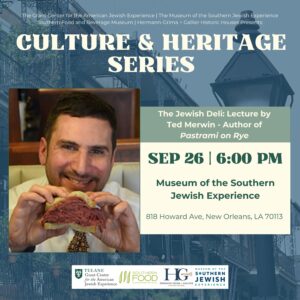Primary Theme: American Jewish Arts and Culture
Wild Visionary: Maurice Sendak in Queer Jewish Context
Maurice Sendak was once described as “one of the most powerful men in the United States,” by art critic Brian O’Doherty, for having “given shape
Talk: “Wild Outside in the Night: Queer Jewishness, Childhood, Maurice Sendak” by Golan Moskowitz
“Wild Outside in the Night: Queer Jewishness and Childhood Liminality in the Picture-Books of Maurice Sendak” by Golan Moskowitz The late Jewish American gay artist
Golan Y. Moskowitz, “Maurice Sendak in Queer Jewish Context”
Golan Y. Moskowitz “Maurice Sendak in Queer Jewish Context” with a response by Naomi Seidman. The late Jewish American artist Maurice Sendak (1928-2012) changed the
Memory, Displacement, and Survival in Maurice Sendak’s American Child Dr. Golan Moskowitz
“I Skipped My Adolescence”: Memory, Displacement, and Survival in Maurice Sendak’s American Child Dr. Golan Moskowitz (Ray D. Wolfe Postdoctoral Fellow at the Anne Tanenbaum
Meet the Authors: Golan Y. Moskowitz
Meet the authors of the Stanford Studies in Jewish History and Culture series: Golan Y. Moskowitz in conversation with series editor David Biale about Wild
Wild Visionary: A Book Launch and Conversation on Maurice Sendak
The Stuart and Suzanne Grant Center for the American Jewish Experience at Tulane University hosted this discussion on Maurice Sendak in celebration of the book

Culture & Heritage Series: The Jewish Deli: Lecture by Ted Merwin – Author of ‘Pastrami on Rye’
WATCH LECTURE HERE Date: September 26 at 6:00 PM Location: 818 Howard Ave, New Orleans, LA 70113 The “Culture & Heritage Series” is a collaborative
Golan Moskowitz introduces his book Wild Visionary
Wild Visionary reconsiders Maurice Sendak’s life and work in the context of his experience as a Jewish gay man. Maurice (Moishe) Bernard Sendak (1928–2012) was a fierce, romantic, and shockingly funny truth seeker who intervened in modern literature and culture. Raising the stakes of children’s books, Sendak painted childhood with the dark realism and wild imagination of his own sensitive “inner child,” drawing on the queer and Yiddish sensibilities that shaped his singular voice. Interweaving literary biography and cultural history, Golan Y. Moskowitz follows Sendak from his parents’ Brooklyn home to spaces of creative growth and artistic vision—from neighborhood movie palaces to Hell’s Kitchen, Greenwich Village, Fire Island, and the Connecticut country home he shared with Eugene Glynn, his partner of more than fifty years. Further, he analyzes Sendak’s investment in the figure of the endangered child in symbolic relation to collective touchstones that impacted the artist’s perspective—the Great Depression, the Holocaust, and the AIDS crisis. Through a deep exploration of Sendak’s picture books, interviews, and previously unstudied personal correspondence, Wild Visionary offers a sensitive portrait of the most beloved and enchanting picture-book artist of our time. For more information: https://www.sup.org/books/title/?id=31783
Beyond Ashkenaz: New Research on Ethnic Jewish Diversity in the Americas
Debates surrounding Jewish identity, culture, and religion abound across time and space. At the root of the discourse are questions about group boundaries; inclusion and exclusion; and the foundations of Jewish identities. In the United States, Jews from diverse, non-Ashkenazi backgrounds often find their Jewishness questioned, their stories marginalized. However, mirroring a broader trend, the
Current American Jewish Music Studies
The study of Jewish music in America is not as robust and diverse as other topics in Jewish Studies. For one thing, most approaches to Jewish Music are Eurocentric (which is true of Jewish Studies in general). But the main reason might be that the subject falls into a kind of academic no-man’s-land.
Jewish Learning through Cultural Arts
The most recent Pew Research Center’s report on American Judaism, “Jewish Americans in 2020,” found that although American Jews overall are not a highly religious group, they are highly engaged in Jewish cultural activities, including cooking Jewish food, visiting historical Jewish sites, reading Jewish literature, and watching television shows or movies about Jewish or Israeli themes.
New Developments in Caribbean Jewish Studies
A rich historiography of Caribbean Jewry had begun to emerge in the work of scholars such as Natalie Zemon Davis and Jonathan Schorsch, building on earlier studies by Robert Cohen and other
